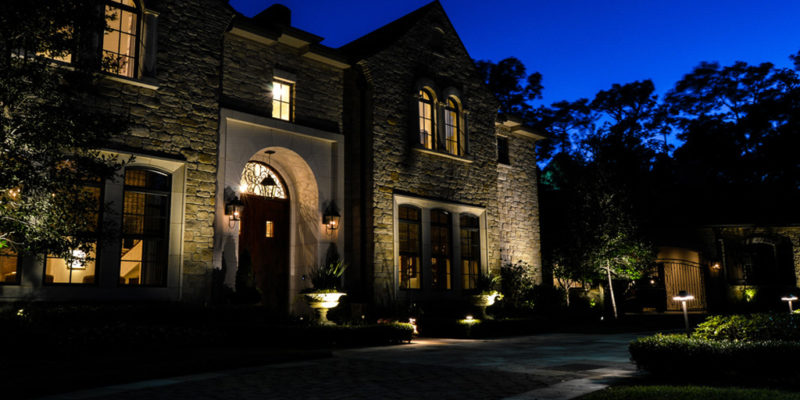Houston Garden Light Types And Ways To Use Them
Garden lights are available in various styles and forms, and different outdoor areas in your garden can benefit from specific types of outdoor lighting.
Here is a guide on the different garden light types and the spaces that they usually work the best in.
1. Garden Spike Lights
The spike lights come mounted on short spikes that are pushed inside the ground at desired locations. They are available in solar power, battery or run off mains, giving you the choice to select the option that matches up to your requirements.
The garden spike lights work well around or in lawns, paths, and flowerbeds.
2. Garden Bollard Lights
The bollard lights look very similar to miniature versions of street lights. These lights are suitable for larger outdoor and garden spaces. They come in a variety of styles and sizes.
In addition to deciding what style and size you need, it is also important to consider the way the light will be emitted. Some of the bollards give off 360-degrees of light, making them perfect for wide and open spaces.
Garden bollard lights work well for wide garden paths, driveways, and lawns.
3. Outdoor Spotlights
Spotlights are usually mounted in elevated positions onto trees or walls. They are usually either angled downwards, or you can position them on spikes where they can be level or pointing upwards. These lights emit wide light beams that offer illumination for larger areas.
The spotlights are typically battery powered or run off mains, yet they also come in solar powered versions. The solar-powered spotlights do not offer a light output that is high.
Outdoor spotlights are perfect for illuminating areas such as lawns, driveways, and paths from above, or walls, bushes, and trees from ground level upwards.
4. Garden Wall Lights
These lights differ from the spotlights as these are light fittings that are decorative which provide a light source to outdoor areas while providing an aesthetic appeal at the same time. The majority of these lighting options are mains-powered, yet they do also come in battery and solar-powered variations.
5. Outdoor Floodlights
The floodlights work on emitting bright beams of light over a wide area and are typically used in the form of a security light along with PIR sensors.
In general, if you use a floodlight in your garden it will eliminate any effects associated with another lighting you have used. However, you can use them like spotlights when you position them on the ground.
6. In-Ground Lights
The in-ground lights are a type of spotlight, but the lights are embedded inside the ground, while the face of the light sits flush at the surface.
This type of lighting option is more commonly used for path and driveway edges. You can also use in-ground lights when you install them horizontally into walls and steps.
7. Deck Lighting
The deck-lighting fittings is another version of lighting which is very similar to the in-ground light fittings. They are shorter as they fit into the wood instead of the ground. You can use this lighting type as an in-ground light, in areas such as rockeries or small flowerbeds.
8. LED Candle Lights
Candlelight is perfect when you would like to create a cozy and warm atmosphere at night. LED candle lights offer a very real effect and them last far longer than using real candles. They are also not affected by outdoor elements such as rain or wind. This lighting works well with water features, along path edges or even with your favorite patio furniture.
9. Lantern Lights And String Lights
Lantern and string lights are generally used for decoration and work well along walls, gazebos, tree branches, and bushes. You can choose from solar-powered or battery-powered lights if you require a more versatile and affordable solution, or you can use mains-powered when using this lighting on a more permanent basis.
If you would like to discover more tips and tricks from Robert Huff Illuminations; visit our blog. Call or contact us today for more information!










